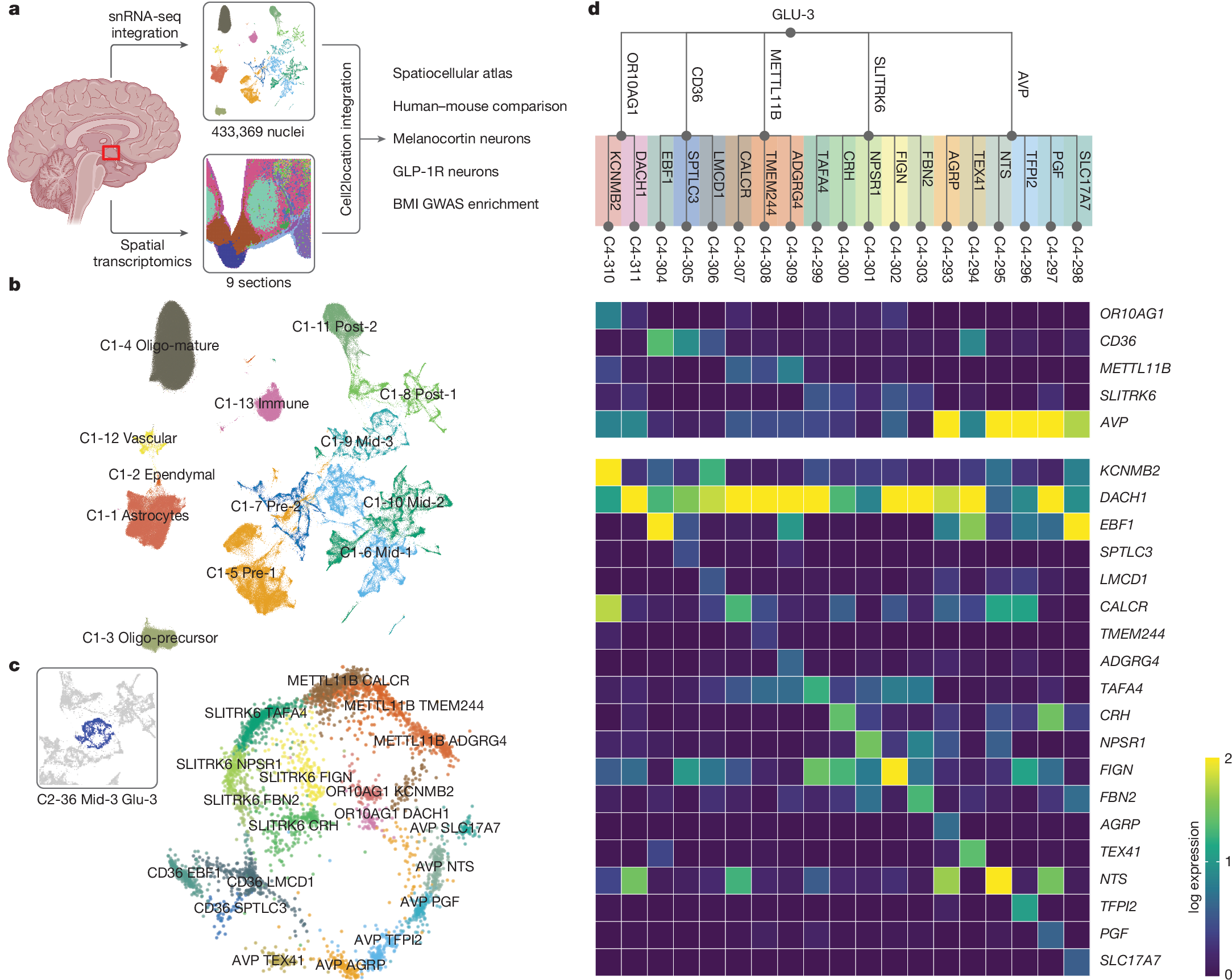2025-02-05 マックス・プランク研究所 (MPG)
<関連情報>
- https://www.mpg.de/24100300/0203-new-cell-atlas-of-the-human-hypothalamus-153735-x
- https://www.nature.com/articles/s41586-024-08504-8
ヒト視床下部の包括的な時空間細胞マップ A comprehensive spatio-cellular map of the human hypothalamus
John A. Tadross,Lukas Steuernagel,Georgina K. C. Dowsett,Katherine A. Kentistou,Sofia Lundh,Marta Porniece,Paul Klemm,Kara Rainbow,Henning Hvid,Katarzyna Kania,Joseph Polex-Wolf,Lotte Bjerre Knudsen,Charles Pyke,John R. B. Perry,Brian Y. H. Lam,Jens C. Brüning & Giles S. H. Yeo
Nature Published:05 February 2025
DOI:https://doi.org/10.1038/s41586-024-08504-8

Abstract
The hypothalamus is a brain region that plays a key role in coordinating fundamental biological functions1. However, our understanding of the underlying cellular components and neurocircuitries have, until recently, emerged primarily from rodent studies2,3. Here we combine single-nucleus sequencing of 433,369 human hypothalamic cells with spatial transcriptomics, generating a comprehensive spatio-cellular transcriptional map of the hypothalamus, the ‘HYPOMAP’. Although conservation of neuronal cell types between humans and mice, as based on transcriptomic identity, is generally high, there are notable exceptions. Specifically, there are significant disparities in the identity of pro-opiomelanocortin neurons and in the expression levels of G-protein-coupled receptors between the two species that carry direct implications for currently approved obesity treatments. Out of the 452 hypothalamic cell types, we find that 291 neuronal clusters are significantly enriched for expression of body mass index (BMI) genome-wide association study genes. This enrichment is driven by 426 ‘effector’ genes. Rare deleterious variants in six of these (MC4R, PCSK1, POMC, CALCR, BSN and CORO1A) associate with BMI at population level, and CORO1A has not been linked previously to BMI. Thus, HYPOMAP provides a detailed atlas of the human hypothalamus in a spatial context and serves as an important resource to identify new druggable targets for treating a wide range of conditions, including reproductive, circadian and metabolic disorders.


